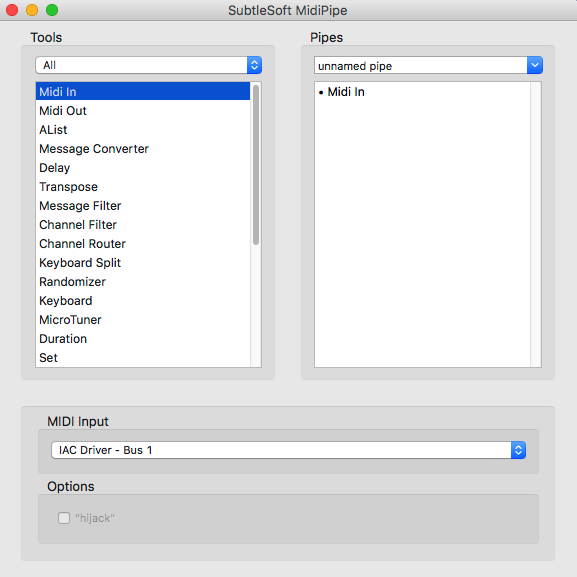


It enables the organist to play several different instruments from around the world. Hauptwerk is designed to be flexible, usually used by a person in their home. This option is a lot cheaper than using a PCC, but you also can't do any unification, borrowing, or coupling.Īnother situation that might come up is a customer has something like a Hauptwerk system. We have a couple of boards (negative drive and positive drive) which receive MIDI note on/off messages and outputs parallel key data. If all the builder needs is conversion of MIDI note On/Off to key data output that is possible too.
Midipipe app software#
Our software in the PCC is capable of doing some coupling, but typically the coupling is being done by the electronic organ From that point on it's just like any other pipe organ. In this case we would provide a Pipe Control Computer (discrete boards or in a packaged system), which we have configured to receive MIDI data. One example is when a church might have an electronic organ such as an Ahlborn-Galanti, but they also have some ranks of real pipes which they want to use. This in itself can take a couple different forms. The other situation that may arise is where MIDI output needs to control components typically associated with a pipe organ. So far most people have asked us to configure it. for an extra fee, we (usually Attila) will configure it for you. This configuration can be done by the builder: however. it needs to know how many keyboards there are, what MIDI channels to use etc. The software in the box does need some configuration, i.e.

expression) and the MIDI DIN plugs for your outputs. The top of the box has several rows of pins where you wire in your keyboards and stops (+12V common), some analog inputs (e.g. The average congregation won't be able to tell the difference.Īt Classic we use a MIDI Control Unit (MCU).

True, a trained organ builder or organist may be able to tell the difference, but there are very few such people in attendance during a Sunday morning service. Blending pipe sound produced from a MIDI expander with actual pipes can be done reasonably successfully. This may be to add specialty sounds (piano, violin) or to expand the tonal quality of the instrument, but the funds aren't there to do it with pipes. There are many pipe organs out there that were built prior to MIDI becoming standard (or the original builder was a purist), but now the organist wants to add a MIDI expander. I'll look at two types of hybrids in this post the older pipe organ which you now want to add MIDI to, and an electronic organ which has MIDI output, to which you want to add pipes. With the changing demographics and aesthetics in main line churches, the desire and/or need for hybrid organs is increasing. Unless somebody is building a tracker organ with no electronics whatsoever, Classic does have a wide variety of products suitable for them. There are many purists in the organ world, people who shudder at the thought of introducing electronic tone generation or MIDI to a pipe organ.


 0 kommentar(er)
0 kommentar(er)
